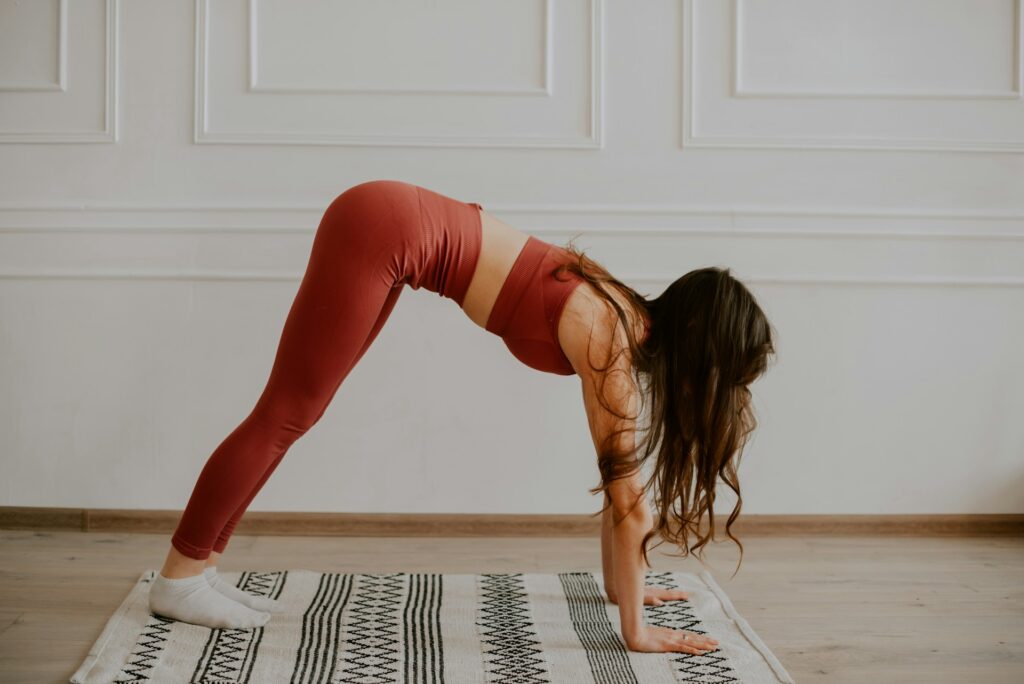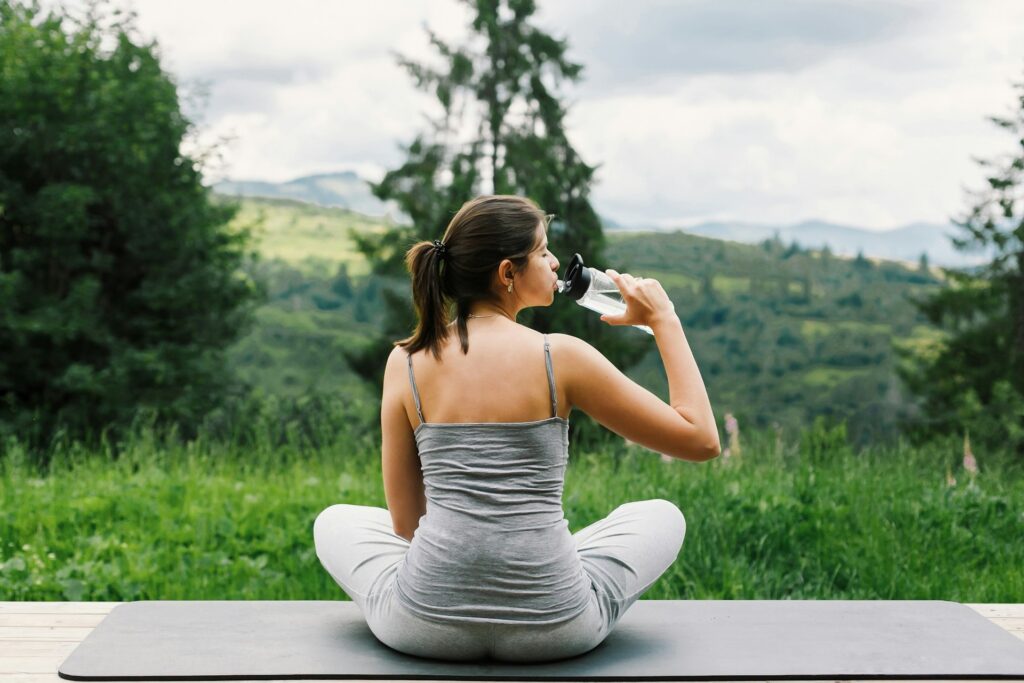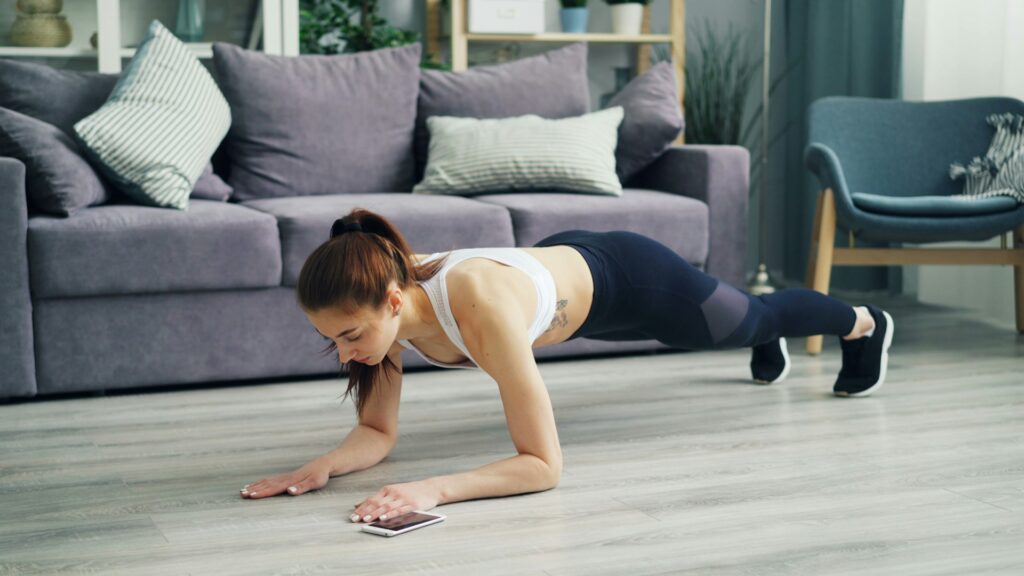Whether you’ve taken a break from movement for a few weeks or a few years, getting started again can feel awkward, both physically and mentally.

However, returning to movement doesn’t have to mean pushing hard or snapping back into shape, at least not straight away. It can be done with ease, rhythm, and rebuilding trust with your body. Here’s how to get going again—gently, and without guilt. The benefits to both your mind and body are immeasurable, and it won’t be long before you start feeling them.
1. Start smaller than you think you need to.

Most people try to jump straight back into their old routine, and end up sore, discouraged, or burned out. Instead, aim for something so manageable it feels almost too easy. Ten minutes of stretching. A walk around the block. One short YouTube video.
The point isn’t performance, it’s consistency. Starting small helps you rebuild the habit without overwhelming your nervous system. You can always do more later, but starting small makes it far more likely that you’ll actually start.
2. Pick movement that feels good, not punishing.

It doesn’t have to be a gym workout, a run, or anything you “should” be doing. If you’re more drawn to dancing in your kitchen, trying a slow yoga flow, or walking while listening to a podcast, that’s the right choice. When movement feels like a punishment for taking a break, your body resists. However, when it feels like self-kindness, your motivation grows naturally. Pleasure is productive, and it’s often the key to sticking with it.
3. Focus on how it feels, not how it looks.

When you start moving again, it’s tempting to fixate on external markers: the scale, your reflection, how out of breath you get. However, changing your focus to how you feel—energised, looser, more clear-headed—creates a more meaningful reason to keep going.
That inner motivation is more sustainable than chasing appearance goals. When you associate movement with feeling better instead of self-correction, it becomes something you actually want to return to, not something you dread.
4. Set gentle, flexible intentions.

Instead of strict goals like “work out five times this week,” try intentions like “move in a way that feels kind” or “stretch every day, even if it’s just five minutes.” Gentle goals keep you engaged without triggering guilt if life gets in the way. Consistency doesn’t mean rigidity. You’re far more likely to build a long-term habit if you allow space for your energy to fluctuate. Flexibility doesn’t mean failure. It means your routine is built for real life.
5. Create a low-pressure routine you can actually enjoy.

This might mean morning movement, post-dinner walks, or afternoon stretch breaks. Find a natural spot in your day where movement can fit without force. Then make it pleasant—add music, wear comfy clothes, light a candle if you’re inside. When movement becomes something enjoyable rather than something you need to “get through,” it starts to stick. You’re not bribing yourself; you’re creating an environment where your body feels safe and supported enough to want to move.
6. Remove the “all or nothing” mindset.

You don’t have to be consistent every single day. You don’t need a perfect plan. Movement doesn’t stop being valid because you missed a few sessions or had a low-energy week. Getting back into movement is like reintroducing an old friend—it takes patience, not perfection. Even if you only move a few times this week, that still counts. Progress doesn’t disappear just because it’s not linear.
7. Celebrate what your body can do right now.

After a break, you might feel slower, tighter, or less coordinated. That’s okay. Instead of comparing yourself to how things used to be, notice what your body can do today, and celebrate that. Whether it’s finishing a short walk, holding a stretch longer, or feeling less stiff after a session, those are wins. You’re not starting from scratch. You’re starting from experience. And your body will remember more than you think.
8. Pair movement with something else you enjoy.

This could be walking while listening to your favourite podcast, doing Pilates while watching a comforting show, or using movement as a way to spend time outdoors or with a friend. Pairing movement with pleasure makes it feel less like a chore and more like a lifestyle. When it’s bundled with things you genuinely look forward to, you create positive associations that build over time.
9. Don’t wait for motivation—create momentum.

Motivation is unreliable, especially when you’re restarting. What works better is building small pockets of momentum. Start before you feel ready. Commit to just five minutes. Let the action lead the attitude. Often, the hardest part is getting up and beginning. Once you’re in it, the resistance softens. Movement creates energy, so even if you start tired, you might end up finishing with more clarity and lightness than you expected.
10. Remind yourself that rest didn’t undo your progress.

Taking a break isn’t a moral failure. It doesn’t erase your past efforts, and it doesn’t mean you have to “make up” for lost time. Your body has likely been storing up resilience, not wasting it. The goal isn’t to return to some old version of yourself. It’s to reconnect with movement in the way that feels right for who you are now. Every time you show up, even in small ways, you’re already succeeding.


